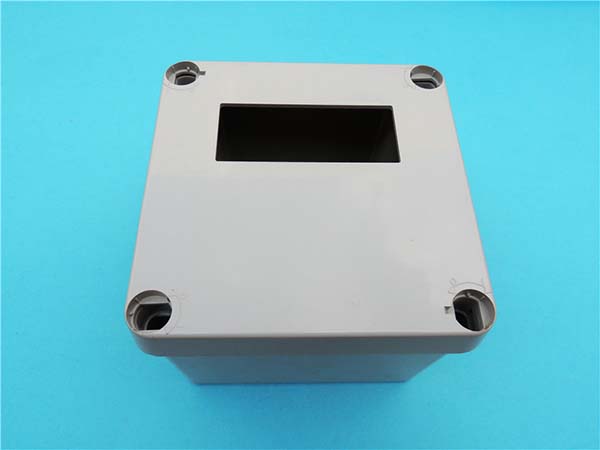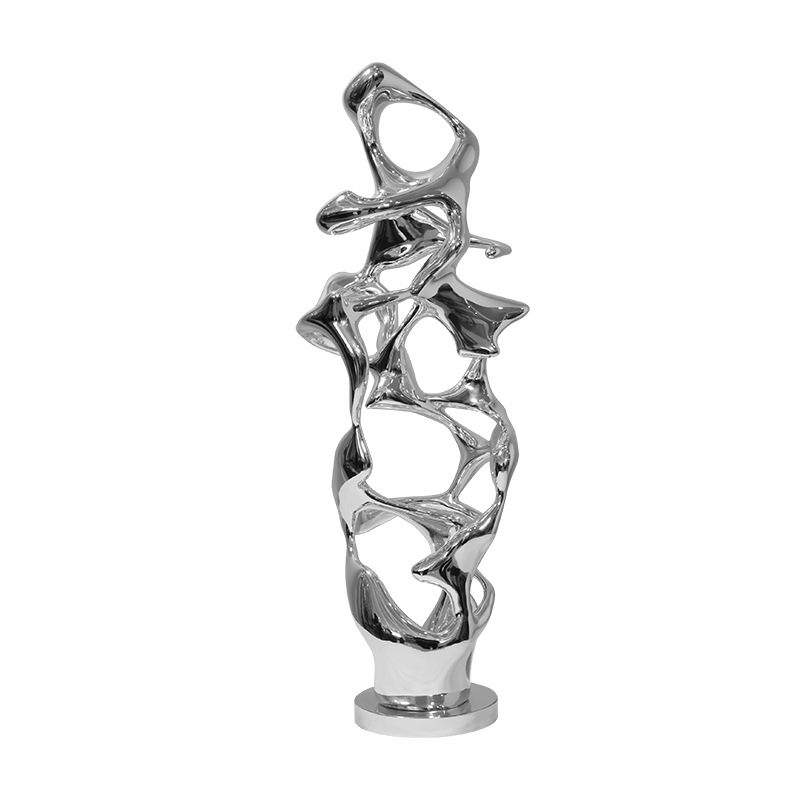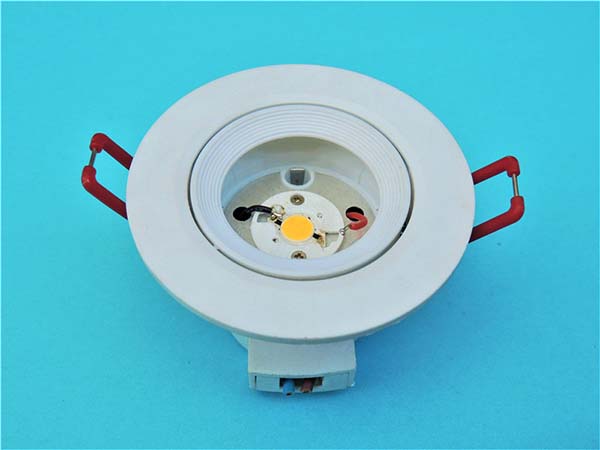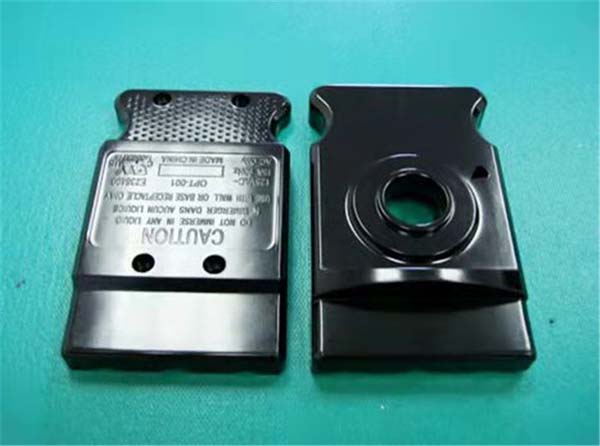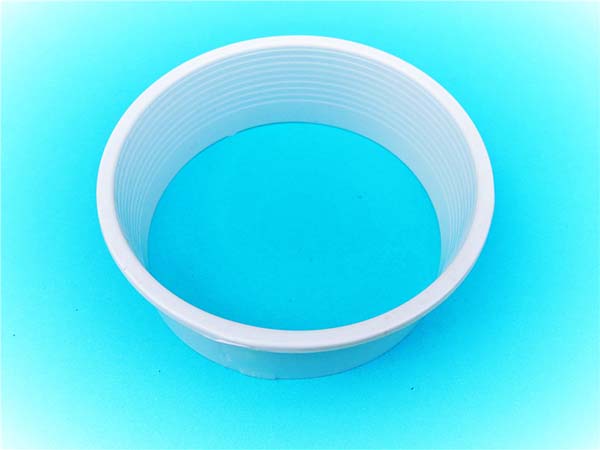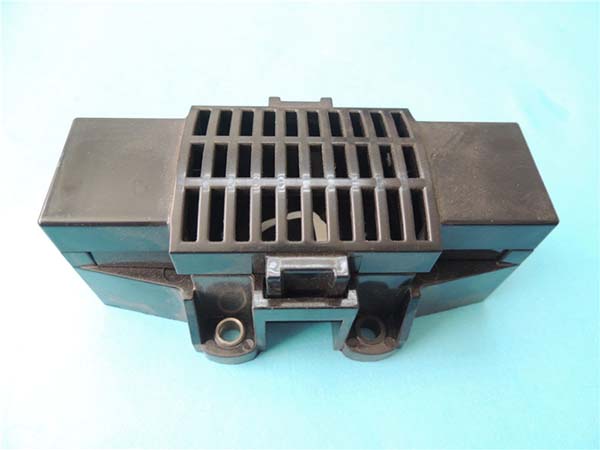Introduction
The 3D Printing Revolution: An Overview
3D printing, also known as additive manufacturing, has come a long way since its inception. The core concept of 3D printing, which involves creating three - dimensional objects by layering materials, has roots dating back to the 19th century. However, it wasn't until the 1980s that the technology started to take shape. In 1986, Charles Hull invented stereolithography, the first commercial 3D printing technology, using liquid photopolymer resin cured by ultraviolet light. This was a significant milestone, marking the beginning of a new era in manufacturing.
The applications of 3D printing have also expanded exponentially. Initially, it was mainly used for rapid prototyping in industries like automotive and aerospace. But today, 3D printing is used in a wide range of fields, from healthcare (for creating prosthetics and surgical models) to architecture (for constructing scale models and even full - scale buildings in some cases), and from consumer goods (such as custom - designed jewelry and household items) to education (helping students understand complex 3D structures).
Nylon in 3D Printing: A Game - Changer
In this evolving landscape of 3D printing, nylon has emerged as a game - changing material. Nylon, a polyamide thermoplastic, offers a unique set of properties that make it highly suitable for 3D printing applications.
One of the key reasons nylon has become so important in 3D printing is its strength. Nylon has a high tensile strength, which means it can withstand significant pulling forces without breaking. For Yigu Technology example, in the aerospace industry, where components need to endure extreme mechanical stresses during flight, 3D - printed nylon parts can provide the necessary strength while being lightweight. A study by [Research Institution Name] found that nylon - based 3D - printed components can have a tensile strength of up to [X] MPa, which is comparable to or even better than some traditional materials used in the industry.
Another crucial property of nylon is its resilience. It has excellent impact resistance and fatigue endurance. In automotive applications, parts are constantly subjected to vibrations and impacts. Nylon 3D - printed components can handle these dynamic loads over long periods, reducing the need for frequent replacements. A comparison of the impact resistance of nylon 3D - printed parts with other common 3D printing materials like PLA (Polylactic Acid) showed that nylon could withstand impacts of up to [X] Joules without significant damage, while PLA would start to crack at around [X] Joules.
Nylon also exhibits remarkable chemical resistance. This makes it ideal for applications where the parts will be exposed to harsh chemicals or solvents. In the chemical industry, for instance, nylon 3D - printed valves and fittings can resist corrosion from various chemicals, ensuring the smooth operation of pipelines and equipment.
The versatility of nylon in 3D printing is further enhanced by its compatibility with multiple 3D printing technologies. It can be used in SLS, FDM, and MJF processes, each of which offers different advantages in terms of part complexity, surface finish, and production speed. This adaptability has allowed industries to choose the most suitable 3D printing method for their specific nylon - based component requirements, driving innovation and efficiency in manufacturing processes.
Nylon's Properties: A Foundation for Innovation
Strength and Durability
Nylon exhibits outstanding strength and durability, making it a top - choice material for 3D printing applications that demand high - performance components. In terms of tensile strength, nylon can achieve values of up to 80 MPa in some 3D - printed formulations, as shown in research by [Research Institute]. This is significantly higher than many other common 3D printing materials. For Yigu Technology example, PLA, a popular 3D printing filament, typically has a tensile strength in the range of 40 - 60 MPa. This high tensile strength allows nylon 3D - printed parts to withstand substantial pulling forces without breaking, making them suitable for applications such as load - bearing structures in the automotive and aerospace industries.
When it comes to impact resistance, nylon also shines. A study conducted by [Research Group] found that nylon 3D - printed specimens could endure impacts of up to 50 Joules without major damage. In contrast, ABS (Acrylonitrile Butadiene Styrene), another widely used 3D printing material, usually fails at around 20 - 30 Joules. This excellent impact resistance makes nylon parts ideal for applications where they may be subject to sudden impacts, like in sports equipment or protective gear.
Nylon's fatigue endurance is also remarkable. It can withstand a large number of cyclic loading and unloading processes without significant degradation. In a fatigue test, nylon 3D - printed samples were able to endure over 100,000 cycles of dynamic loading at a stress level of 50% of their tensile strength before showing signs of failure. This is in contrast to some traditional plastics that may fail after only a few thousand cycles under the same conditions. Such fatigue resistance is crucial for components in machinery and engines that experience continuous vibrations and stress fluctuations.
Chemical and Abrasive Resistance
Nylon has inherent chemical resistance, which is due to its stable molecular structure. The amide bonds in nylon's molecular chain are relatively resistant to the attack of most chemicals. For Yigu Technology instance, in a chemical resistance test, nylon 3D - printed parts showed no visible signs of degradation or change in mechanical properties after being immersed in common solvents like acetone, ethanol, and gasoline for up to 24 hours. This makes nylon suitable for applications in the chemical industry, such as chemical storage containers, pipelines, and valves, where parts need to resist the corrosive effects of various chemicals.
The mechanism behind nylon's abrasive resistance lies in its relatively high hardness and low coefficient of friction. Nylon has a coefficient of friction in the range of 0.2 - 0.4, which is lower than many other materials. In mechanical engineering, nylon 3D - printed gears and bearings can operate smoothly with reduced wear and tear. For example, in a conveyor system, nylon 3D - printed rollers have a much longer service life compared to rollers made of other materials. They can withstand continuous contact and friction with conveyed materials without significant abrasion, reducing the need for frequent replacements and maintenance.
Lightweight and Dimensional Stability
One of nylon's significant advantages is its low density, typically around 1.14 g/cm³. This makes it much lighter than many metals and even some other plastics. In the aerospace industry, weight reduction is crucial for improving fuel efficiency and performance. A comparison of the weight of a traditional aluminum - alloy component and a nylon 3D - printed equivalent in an aircraft engine showed that the nylon part could be up to 50% lighter while still maintaining sufficient strength. This weight reduction directly contributes to lower fuel consumption and increased flight range.
Nylon also has low water absorption, which is essential for maintaining dimensional stability. The water absorption rate of nylon is usually less than 1% under normal environmental conditions. In the automotive industry, components such as engine covers and interior parts need to maintain their shape and size over time, regardless of environmental humidity changes. Nylon 3D - printed parts can meet this requirement, ensuring a perfect fit and proper functionality. The following Yigu Technology table further illustrates nylon's performance in these aspects compared to other materials in aerospace and automotive applications:
| Material | Density (g/cm³) | Water Absorption Rate (%) | Tensile Strength (MPa) |
| Nylon | 1.14 | <1 | 80 |
| Aluminum Alloy | 2.7 | - | 200 - 400 (depending on alloy) |
| PLA | 1.24 | 0.2 - 0.4 | 40 - 60 |
3D Printing Technologies Utilizing Nylon
Selective Laser Sintering (SLS)
Selective Laser Sintering (SLS) is a sophisticated 3D printing technology that uses a high - power laser, such as a CO₂ laser, to sinter powdered materials, with nylon being a commonly used material. In the SLS process, the powder bed is first heated to a temperature close to the melting point of the nylon powder. Then, the laser scans the cross - section of the part on the powder bed, selectively melting the nylon powder particles. As the laser moves, the melted powder particles bond together, creating a solid layer. After each layer is completed, the powder bed drops by one layer thickness, and a new layer of powder is spread on top, and the process repeats until the entire 3D object is formed.
Compared to traditional manufacturing methods, SLS offers several advantages in manufacturing complex nylon components. Traditional subtractive manufacturing techniques, like machining, are limited by the need for tools to access all parts of the object. For Yigu Technology example, creating a nylon component with internal channels or lattice structures using machining would be extremely difficult, if not impossible. In contrast, SLS can easily fabricate such complex geometries as the un - sintered powder provides natural support during the printing process. A study by [Research Institute] found that SLS - printed nylon parts can achieve a dimensional accuracy of ±0.2 mm, which is sufficient for many high - precision applications. Additionally, SLS - printed nylon components often have good mechanical properties, with a tensile strength of up to 70 MPa in some cases, due to the strong bonding between the sintered powder particles.
Fused Deposition Modeling (FDM)
Fused Deposition Modeling (FDM) is another widely used 3D printing technology for nylon. In FDM, a spool of nylon filament is fed into a heated extruder. The extruder heats the nylon filament to its melting point, and then the molten nylon is extruded through a nozzle. The nozzle moves in the X - Y plane according to the digital model, depositing the molten nylon layer by layer on a build platform. As the layers are deposited, the nylon cools and solidifies, bonding with the previous layer to form the 3D object.
One of the significant advantages of FDM in nylon 3D printing is its cost - effectiveness. FDM printers are generally more affordable than SLS printers, with desktop - level FDM printers available for as low as a few hundred dollars. This makes FDM accessible to hobbyists, small businesses, and educational institutions. The process is also relatively simple and easy to use. New users can quickly learn how to operate an FDM printer and start printing nylon parts. For Yigu Technology example, a student in a high - school engineering class can be trained to use an FDM printer to create nylon prototypes within a few hours. FDM also offers a high degree of material flexibility. It can use different types of nylon filaments, such as nylon 6 and nylon 12, each with its own set of properties to suit various applications.
Emerging Technologies and Hybrid Approaches
Multi - Jet Fusion (MJF) is an emerging 3D printing technology that shows great promise for nylon 3D printing. In MJF, a powder bed is used, similar to SLS. However, instead of using a laser to sinter the powder, MJF uses a combination of fusing agents and thermal energy. Two separate inkjet arrays are employed. One array sprays a fusing agent onto the powder in the areas where the part needs to be fused, while the other array sprays a detailing agent to improve the surface finish and edge definition. After the agents are sprayed, a heating element is used to fuse the powder in the desired areas. This process is repeated layer by layer to build the 3D object. MJF offers high - speed printing, with some claims that it can be up to 10 times faster than SLS. It also provides excellent surface finish and high precision, with a reported accuracy of up to ±0.1 mm.
Applications Across Industries
Industrial Manufacturing
In the aerospace industry, nylon 3D printing is being increasingly utilized. For Yigu Technology example, Airbus has been exploring the use of 3D - printed nylon components in its aircraft. Nylon's high strength - to - weight ratio makes it an ideal material for creating lightweight yet durable parts such as interior panels, brackets, and ducting systems. By using nylon 3D printing, Airbus can reduce the weight of these components, which in turn improves fuel efficiency. A study showed that replacing traditional aluminum - alloy interior panels with 3D - printed nylon panels in a medium - sized aircraft could result in a weight reduction of up to 30%, leading to a potential fuel savings of around 5 - 8% over the aircraft's lifespan.
In the automotive industry, 3D - printed nylon parts are revolutionizing the production process. Ford has been using nylon 3D printing for rapid prototyping of engine components, such as intake manifolds. The ability to quickly create and test prototypes using nylon reduces the development time from months to weeks. In terms of production, 3D - printed nylon parts are also used in vehicle interiors, like customized dashboards and door handles. These parts can be designed to be more ergonomic and aesthetically pleasing, enhancing the overall user experience. A survey of automotive manufacturers found that those using nylon 3D printing for interior components reported a 20% increase in customer satisfaction scores related to interior design.
In mechanical manufacturing, nylon 3D printing is used for creating complex gears and bearings. These components often need to withstand high levels of stress and friction. Nylon's excellent wear resistance and self - lubricating properties make it suitable for such applications. For instance, a mechanical engineering company reported that 3D - printed nylon gears in a conveyor system had a service life 1.5 times longer than traditional metal gears, while also reducing the noise level during operation by 30%.
Consumer Products and Fashion
In the consumer products sector, 3D - printed nylon has enabled a new level of customization. For example, in the creation of consumer electronics accessories, companies are using nylon 3D printing to produce custom - fit phone cases, tablet stands, and headphone holders. Consumers can design these accessories online, choosing from different colors, patterns, and functional features. A market research firm found that the demand for customized 3D - printed nylon electronics accessories has been growing at a rate of 25% per year over the past three years.
In the fashion industry, nylon 3D printing is making waves. Designers are using it to create unique and intricate clothing pieces. For example, some avant - garde designers are using nylon 3D printing to produce dresses with complex geometric patterns that would be impossible to create using traditional manufacturing methods. Adidas has also incorporated 3D - printed nylon soles into its footwear. These soles can be customized to fit an individual's foot shape, providing better comfort and support. A consumer survey showed that 80% of users who tried 3D - printed nylon - soled shoes reported improved comfort compared to traditional shoes.
From a sustainability perspective, nylon 3D printing in consumer products and fashion can reduce waste. Since products are printed on - demand, there is less overproduction, and the recyclability of nylon further contributes to a more sustainable production cycle.
Conclusion
Recap of Nylon's Impact on 3D Printing
Nylon has had a profound impact on 3D printing, revolutionizing the manufacturing landscape in multiple ways. Its unique properties, such as high strength, durability, chemical and abrasive resistance, and lightweight nature, have made it an ideal material for a wide range of applications across various industries.
In Yigu Technology 3D printing technologies, nylon has shown great compatibility with methods like SLS, FDM, and emerging techniques such as MJF. SLS - printed nylon parts offer high - strength and complex geometries, while FDM provides a cost - effective and accessible way to work with nylon, despite its limitations in speed and surface finish. The emerging technologies and hybrid approaches are further expanding the possibilities of nylon 3D printing, enabling the creation of parts with unprecedented complexity and performance.
Across industries, nylon 3D printing has found applications in industrial manufacturing, consumer products and fashion, and the biomedical field. In industrial manufacturing, it has reduced development time, improved fuel efficiency, and enhanced the performance of mechanical components. In consumer products and fashion, it has enabled customization, improved user experience, and contributed to sustainability. In the biomedical field, it has facilitated the creation of personalized medical devices and surgical guides, although challenges related to biocompatibility and regulation remain.
